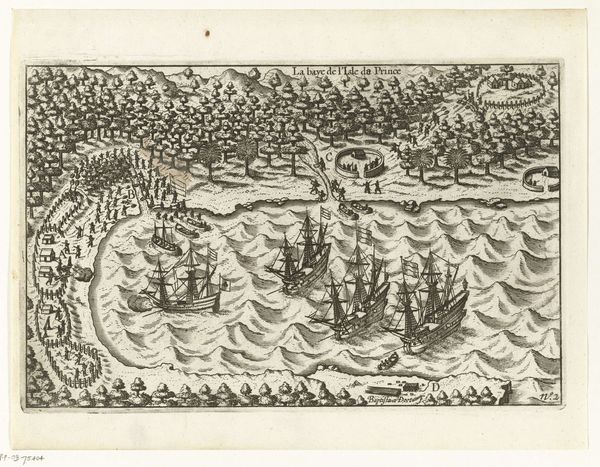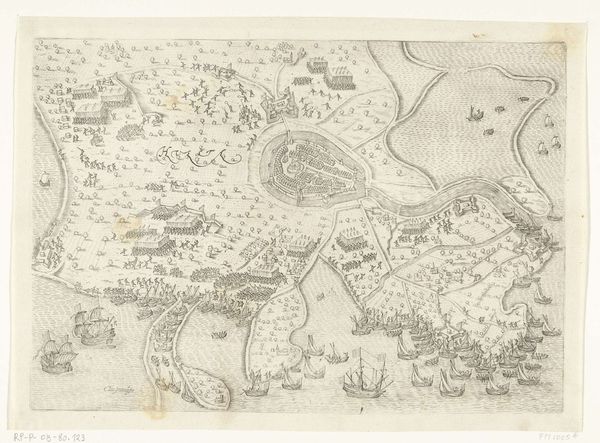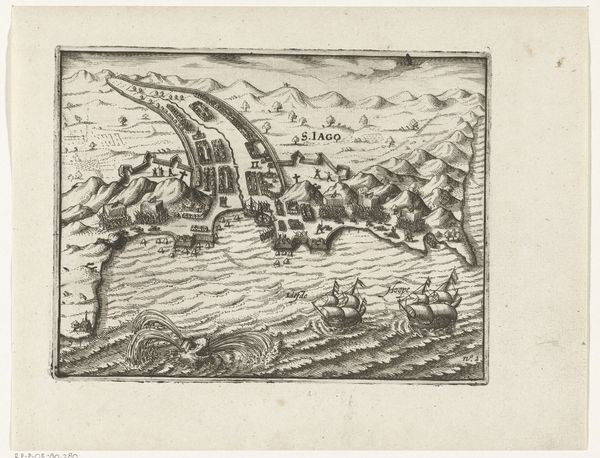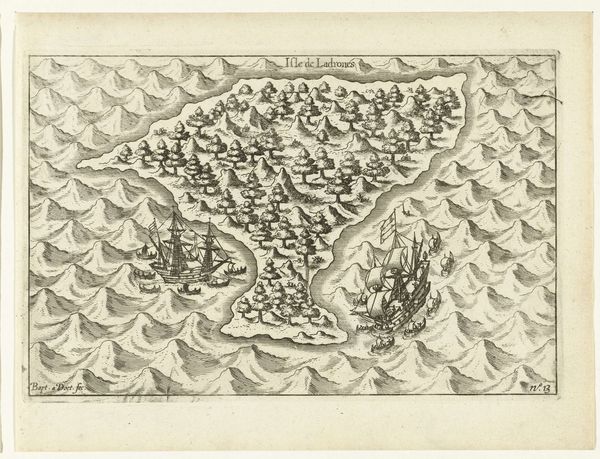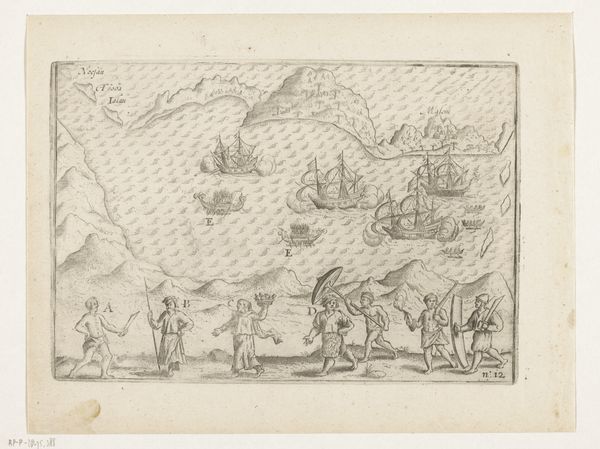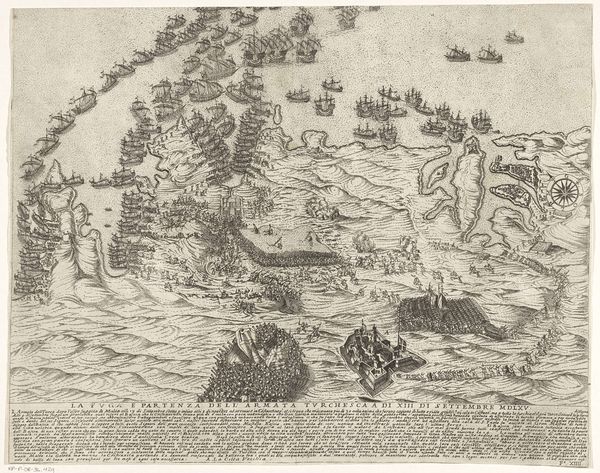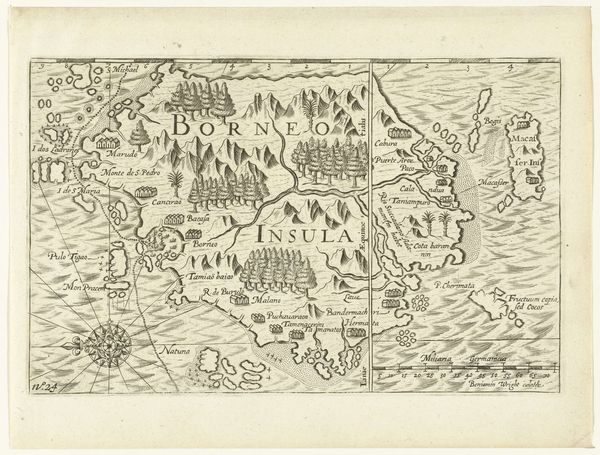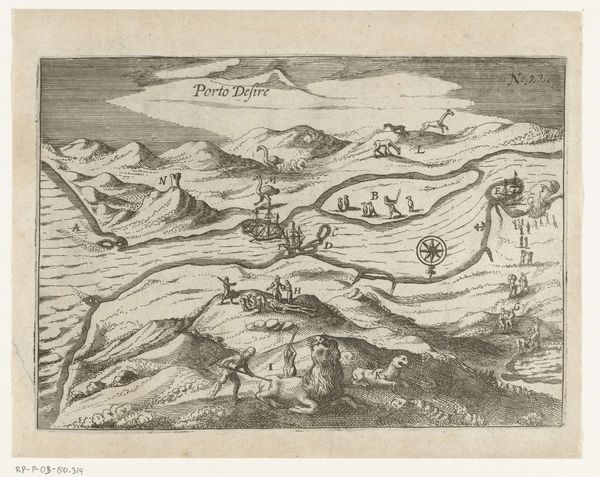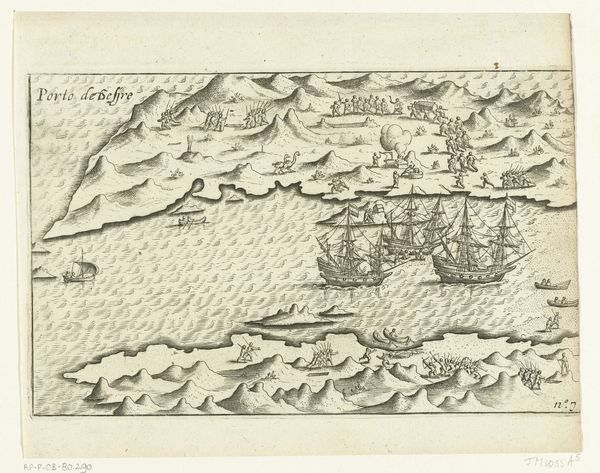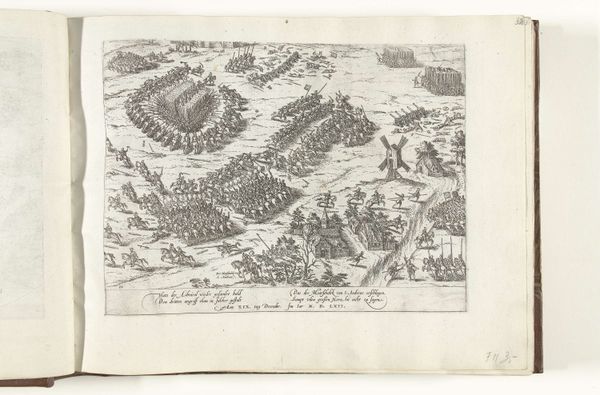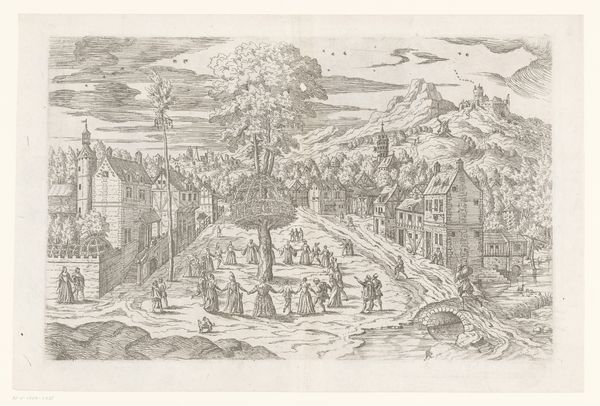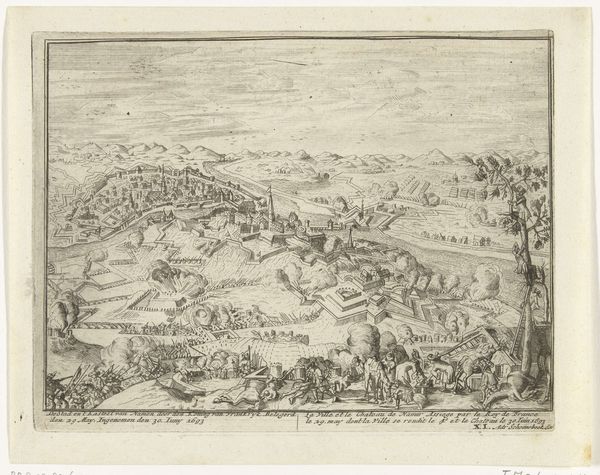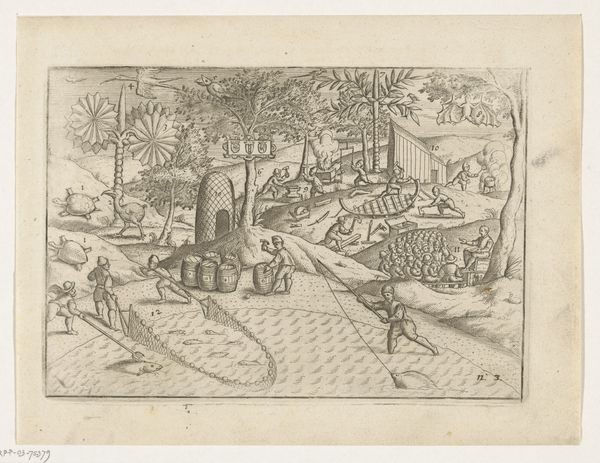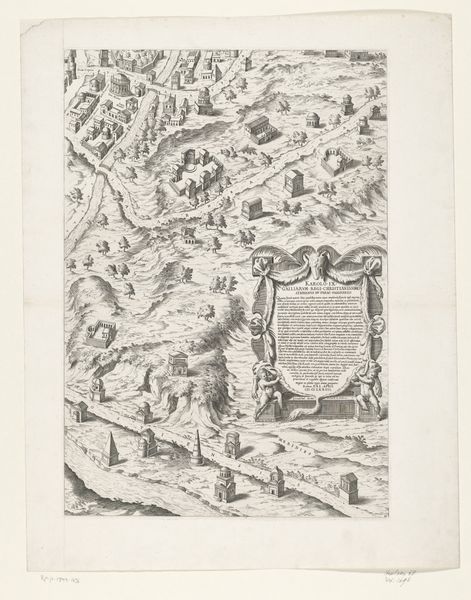
print, engraving
# print
#
pen illustration
#
pen sketch
#
old engraving style
#
landscape
#
ancient-mediterranean
#
history-painting
#
engraving
Dimensions: height 145 mm, width 225 mm
Copyright: Rijks Museum: Open Domain
Editor: This engraving, titled "Aankomst in Rio de Janeiro, 1599," is attributed to an anonymous artist and thought to have been created sometime between 1601 and 1646. It depicts the arrival of ships in Rio, offering what appears to be both a maritime scene and a cartographic rendering. What immediately strikes me is its rather objective, almost detached depiction of a pivotal historical event. How do you interpret this work? Curator: Considering its creation date, this print likely functioned as a form of news dissemination as much as art. Prints like these served a crucial public role in visualizing distant lands and colonial endeavors. Do you notice how the ships are emphasized, seemingly larger than life in relation to the landscape? Editor: Yes, the ships command the most space! Curator: Precisely. This likely reflects the economic and political importance the Dutch Republic placed on maritime trade and colonial expansion. These images circulated amongst merchants, politicians, and the public, shaping perceptions of Brazil and its resources. Consider the power dynamics at play – who controlled the narrative and whose perspective is centered in this depiction of “arrival?" It also begs the question of what this ‘arrival’ really means, who was already there? Editor: So, the print not only documents but also subtly promotes a specific colonial agenda? Curator: Exactly. The way the landscape is presented, almost as a resource ripe for the taking, reinforces this idea. It’s a window into the public face of colonialism at the time. What do you make of its lack of artistry? Editor: I see what you mean. It’s not necessarily focused on aesthetic pleasure, but more so conveying some message to a Dutch audience. Curator: And that focus makes all the difference. Thanks to this work, I’m more cognizant of the socio-political forces that shape these early landscape depictions. Editor: I agree, understanding the historical context really transforms my perspective of it.
Comments
No comments
Be the first to comment and join the conversation on the ultimate creative platform.
